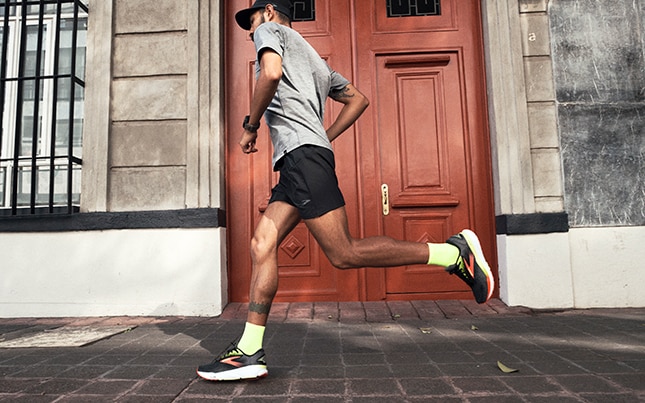Overpronation vs. underpronation: What to look for in running shoes

All running shoes are not created equal, especially considering we don't all land on the ground the same. Our feet should land in a neutral position, but quite a few of us may notice some rolling one way or another. This is known as overpronation vs. underpronation, and depending on your feet, your shoes will require different features to run comfortably, efficiently, and prevent injury.
When choosing a new running shoe, we may go into a store and request the same flashy, fluorescent shoe a friend was just raving about. But while they may have been fast and winning in their new sneakers, that doesn't mean the shoes will work for you. Similarly, it may not be the best idea to just go pick up the first shoes that call to you at a sports store.
Instead, it's important to consider many factors related to your unique body and how you naturally proceed through your running stride. One key factor that should always be front and center is that of overpronation vs. underpronation.
What is overpronation vs. underpronation?
These are terms that define how your foot rolls when it touches the ground. Most of the time, we are born with a certain strike, and it may be determined by whether our feet naturally turn in or out. It is also possible your pronation could have been caused by compensating for an injury. Even your form breaking down or running tired can cause a change in the way you hit the ground. Similarly, daily habits — like standing on your feet for extended periods of time — may cause your feet to unconsciously seek relief and adjust.

Feet that overpronate tend to roll inward when they strike, putting unnecessary pressure on your toes. It's not as dramatic as a newborn calf, but your feet can benefit from some stability. Everyone's foot should do a little rolling, but if the foot rolls inward more than 15%, then it is considered overpronation. One contributing factor to the rolling in could be one's arches — flat feet can make it worse. Some of the common consequences of overpronation are shin splints and big toe injuries. Checking for wear on the inside tread of your shoes can help you determine if you overpronate.
Underpronation, or supination, is the opposite issue, and it causes the foot to roll outward. This is not as common as overpronation. Supination can be seen when walking, as your foot may seem to lean on the outer edge when striking the ground. The outer tread of your shoes may also be worn out, which is an easy giveaway. Pain from this issue can be felt all over, from your heel and up your back. This could lead to plantar fasciitis, shin splints, ankle instability, and potential ankle rolling and sprains.
Finding the best shoes for your feet
When it comes to choosing the right running shoes for you, runner and physiatrist Dr. Monica Verduzco-Gutierrez suggests a few factors play into finding the perfect match.
"We need to consider the strength of foot muscles, whether or not you're flat-footed, and even the width of your forefoot," she says. "A sports med physiatrist or physical therapist can evaluate you and help determine what your foot is doing. They can then give recommendations to take to a running shoe store."
While a professional diagnosis is ideal, there are also some general guidelines for runners who overpronate or supinate. Overpronators should look for shoes with support technologies that guide their feet and legs through their stride. Supinators, meanwhile, should seek out more neutral shoes with soft cushioning to protect their feet from sustained stress.

The shoe purchase is also just one part of finding your perfect pair of running shoes — it's important to break them in over time and monitor how your feet, legs, hips, and body feel during the first few weeks of this process. If you notice any discomfort, make note of it and consult a specialist at a running store for additional guidance.
Whether your foot rolls inward or outward should not impact your success as a runner. Finding the right sneaker for you can make all the difference in providing comfort, propelling you forward, and preventing injuries. To get started today, check out the Brooks Shoe Finder.
Our writer's advice is intended for informational or general educational purposes only. We always encourage you to speak with your physician or healthcare provider before making any adjustments to your running, nutrition, or fitness routines.

